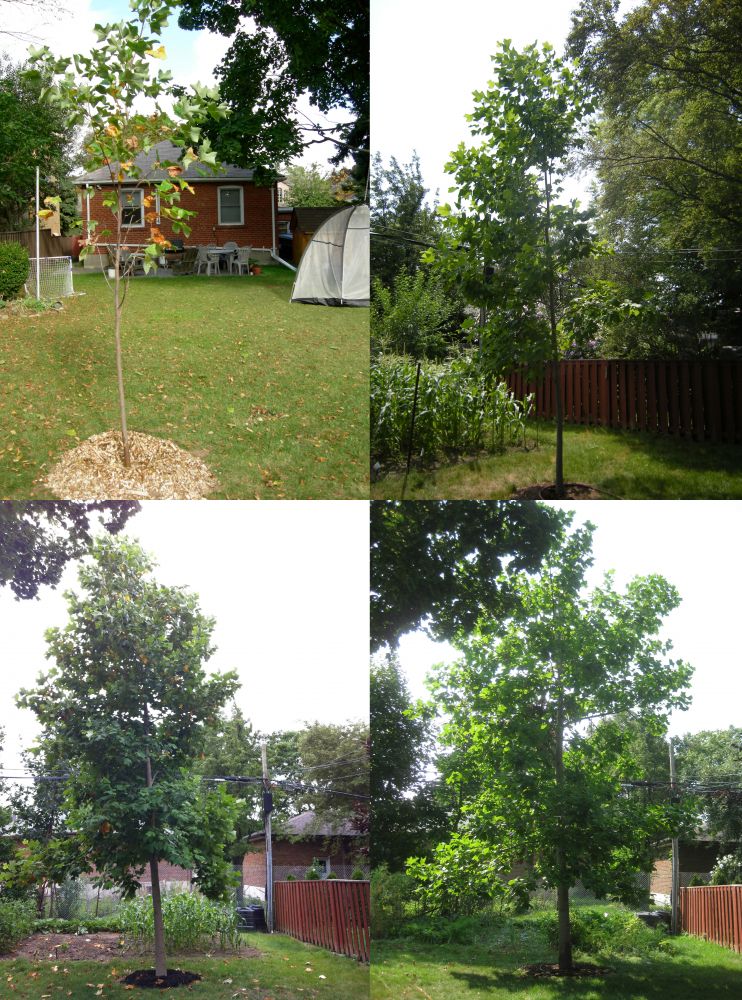
Days when I get to do follow-up health assessments on LEAF trees and shrubs planted in past years are some of my favourite days! The follow-up process is pretty simple. When participants go through any of our planting programs we let them know they might be contacted in the future to see if we can check on the health of their LEAF trees or shrubs. A few years down the road, we contact past participants at random to see if we can come and check on our leafy babies. Homeowners don’t even need to be home for the assessment, but it’s great when they are!
Once we (LEAF arborists) get to a property, we scope out the LEAF trees and shrubs and begin a full assessment to see how they have adapted to their new home. It’s amazing to see how trees planted in the right place, with the right care, can quickly become big and beautiful! We look at indicators such as foliar (leaf) or root issues, signs and symptoms of pests, any potential growth conflicts (buildings, fences etc.) and overall structure of the tree.
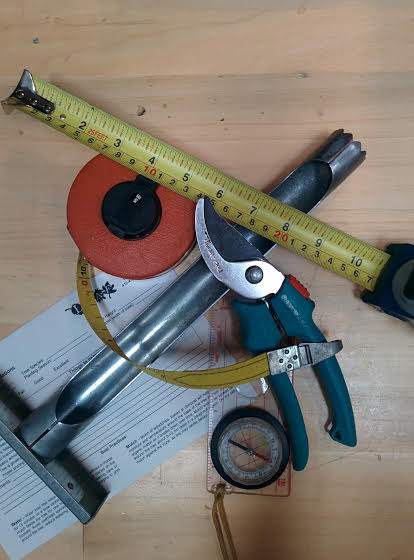
Some of the tools used at
LEAF follow-up assessments
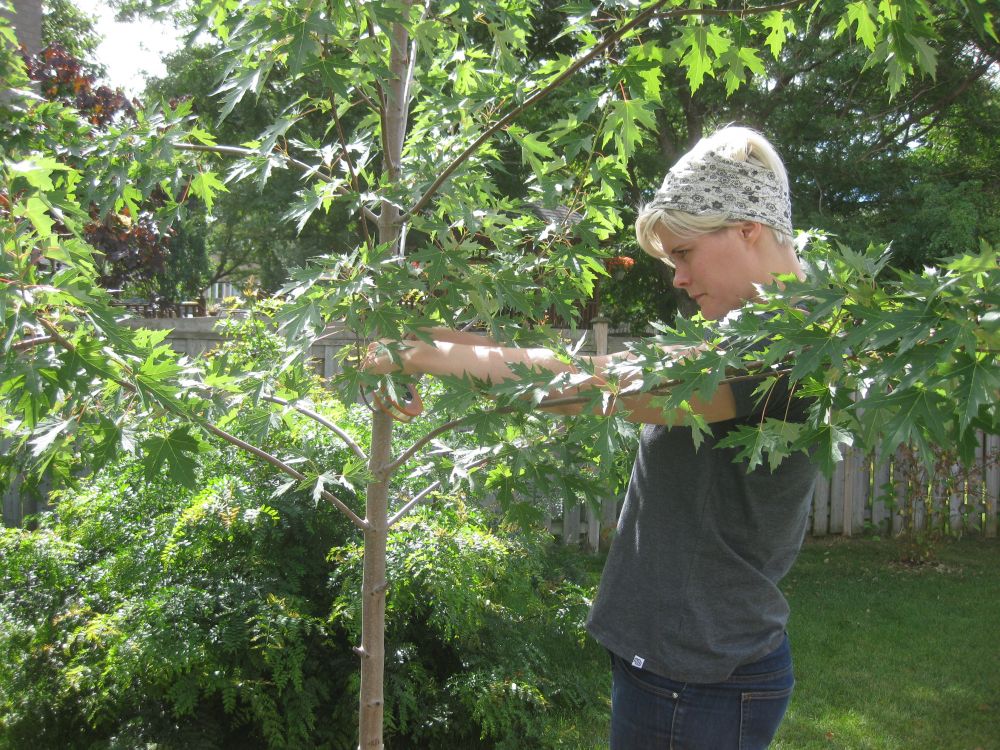
Arborist measures a LEAF
silver maple as part of the
follow-up process
Two of the most common tree health concerns I encountered last year were water stress (too little or too much) and lack of structural pruning. Both of these issues can lead to serious problems down the road if left uncorrected. Fortunately, both can also be corrected if caught early, which is why we try to complete follow-up assessments within the first few years after planting.
The results of our assessment are provided to each homeowner in the form of a brief report that includes recommendations for any additional care. If there is minor pruning to be done, we also complete that task for free if participants want us to!
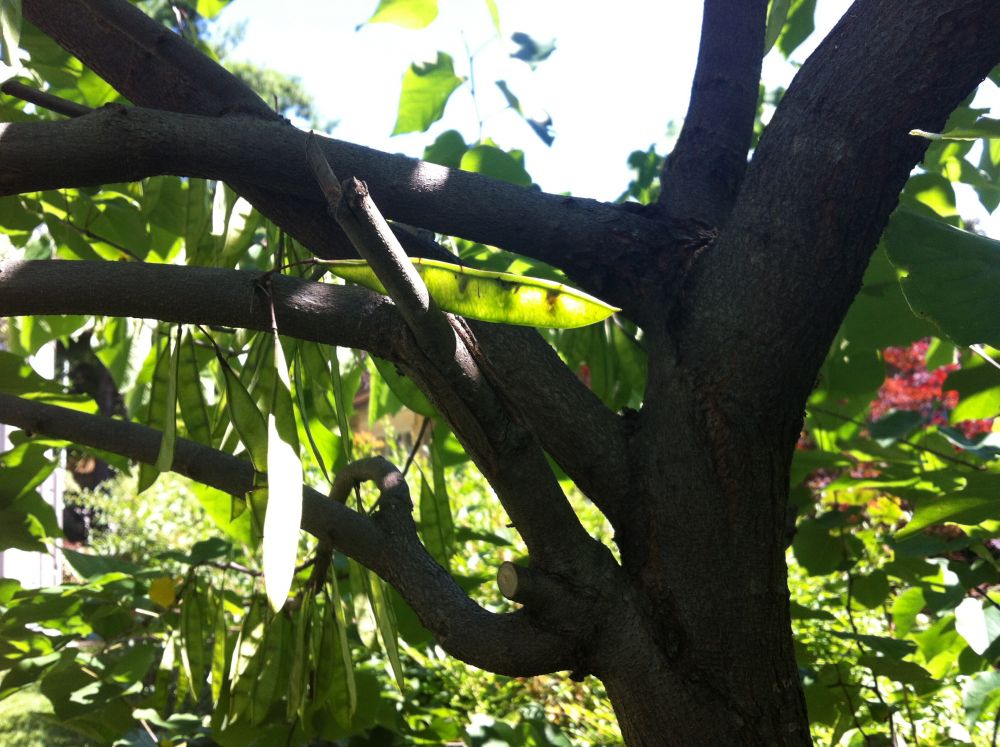
Structural issues, such as crossing branches, can cause tree limbs to compete and interfere with each other, limiting nutrient flow and causing weak unions that can result in breaking/falling branches Structural pruning is essential!
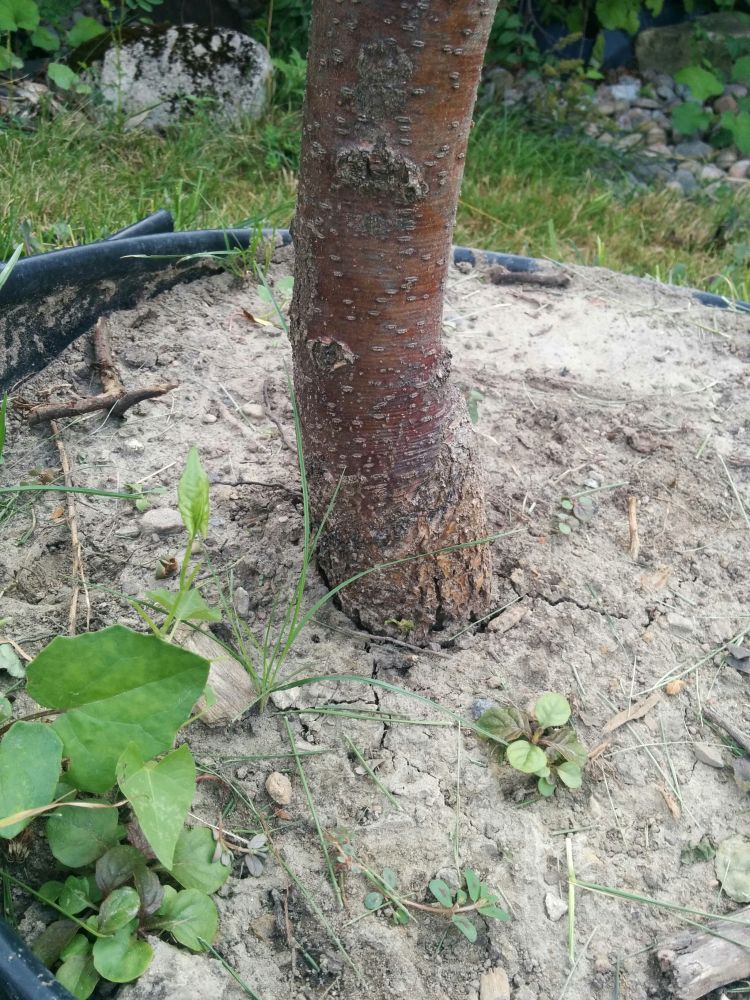
Proper watering and mulching are essential for good overall health in yard trees. This tree could use both!
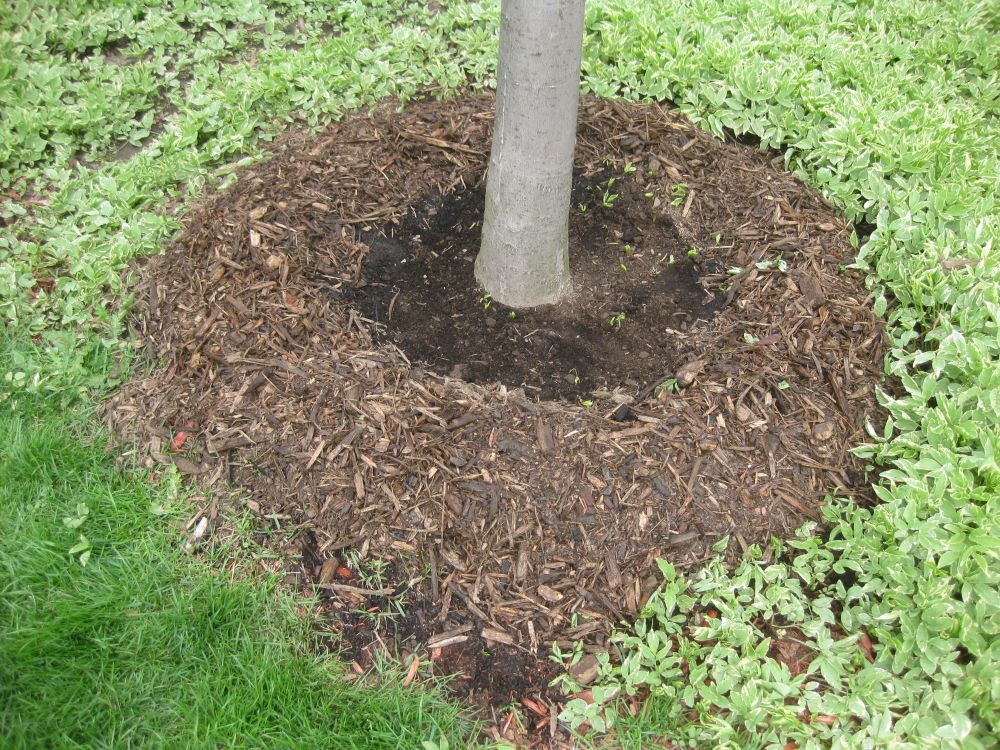
This tree has been properly mulched. Mulch reduces evaporation of water from soil and offers a protective barrier from lawn mowers and weed-wackers. It also adds organic matter to the soil as it decomposes.
On top of the educational report we provide to homeowners, follow up assessments allow us to evaluate ourselves. We check to make sure that species are being planted in proper locations and that we are doing a good job of explaining necessary tree care to our program participants. I’m happy to report that we have an excellent track record, with the majority of our trees being in good to excellent condition!
Keep an eye out for an email asking if we can come by to evaluate your LEAF tree or shrub. If you have a tree that has been planted in the last 5 years, we also have a maintenance package that you can purchase which includes a health assessment, mulching and pruning services to keep your tree happy and healthy.Contact our office for more details.
Jackie Hamilton is an ISA certified arborist and LEAF’s Residential Planting Programs Coordinator.
The Backyard Tree Planting Program is supported by York Region, the City of Markham, the Town of Newmarket, the City of Toronto, Toronto Hydro and the Town of Ajax.
